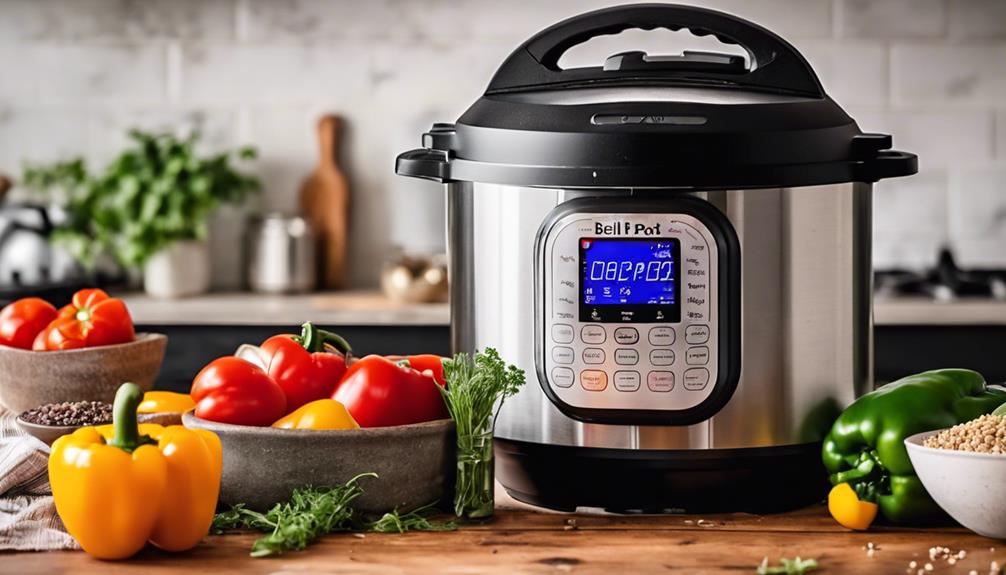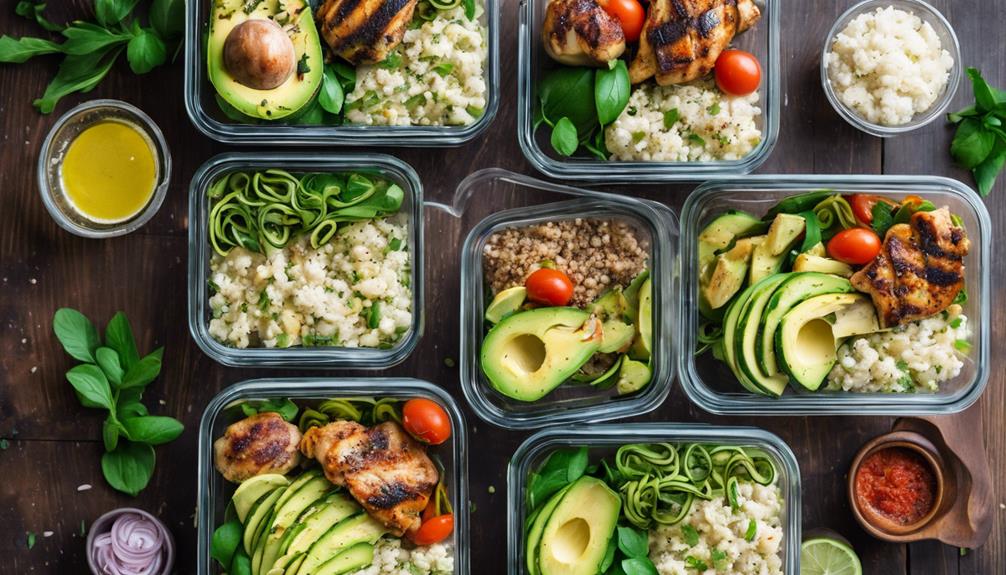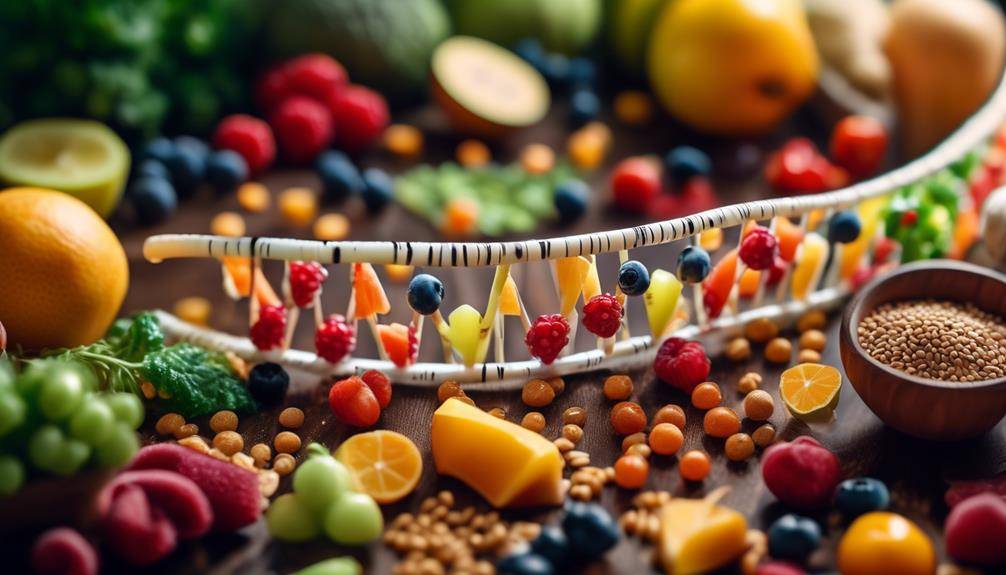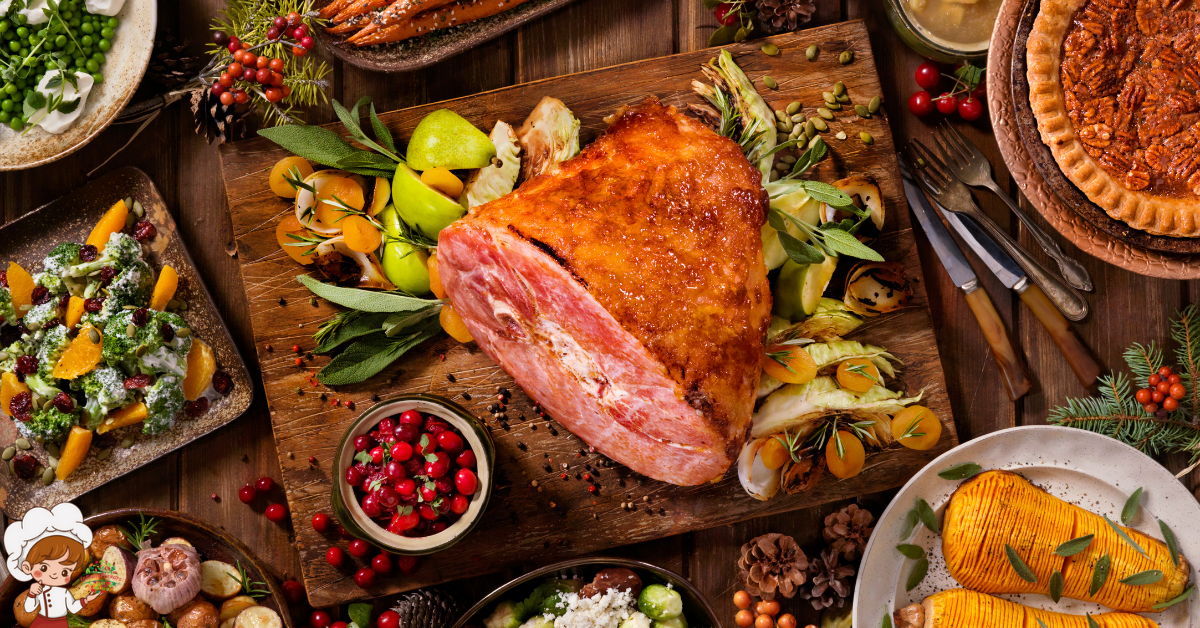The Most Important Gluten-Free Diet Nutrition Facts
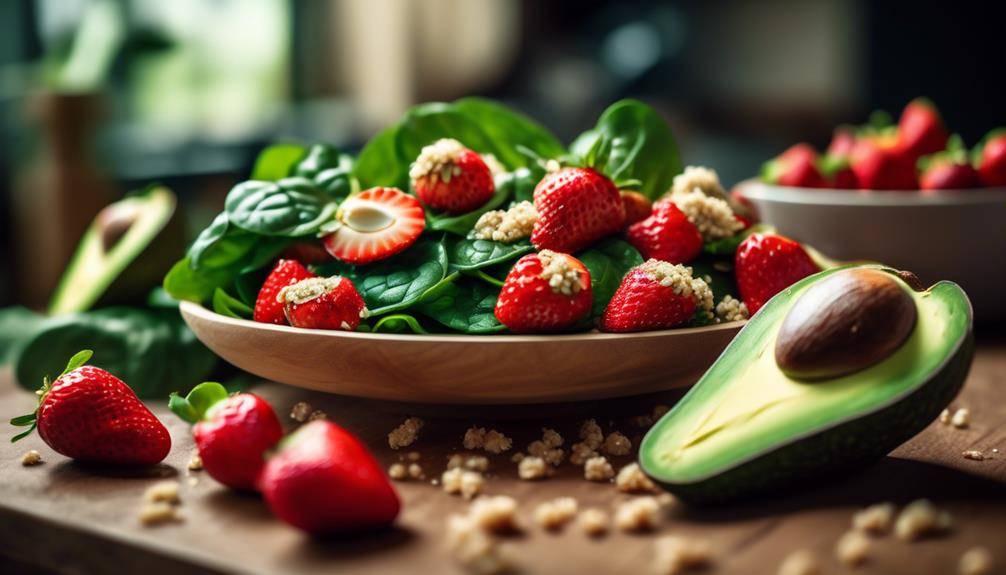
Gluten-Free Diet Nutrition Facts; Are you tired of feeling weighed down by your diet? It’s time to break free from the chains that gluten can place on your nutrition. In this discussion, we will explore the facts surrounding a gluten-free diet and its impact on your overall well-being. From understanding what gluten actually is, to the potential challenges and benefits of adopting a gluten-free lifestyle, we will provide you with the knowledge you need to make informed choices about your diet. So get ready to discover the truth behind gluten-free nutrition and unlock a world of culinary possibilities.
What Is Gluten?
Gluten is a protein composite found in grains like wheat, barley, and rye, which can cause adverse reactions in individuals with gluten sensitivity or celiac disease. Understanding gluten and its effects on the body is crucial for those who follow a gluten-free diet.
Gluten sensitivity and celiac disease are two conditions that can lead to negative health outcomes when gluten is consumed. Gluten sensitivity refers to a person’s inability to properly digest gluten, resulting in symptoms such as bloating, diarrhea, and fatigue. Celiac disease, on the other hand, is an autoimmune disorder where the ingestion of gluten triggers an immune response that damages the small intestine. People with celiac disease must strictly avoid gluten to prevent further damage and promote healing.
The benefits of a gluten-free diet for those with gluten sensitivity or celiac disease are numerous. Firstly, eliminating gluten from the diet can alleviate gastrointestinal symptoms like bloating and diarrhea, leading to improved digestion and overall comfort. Secondly, it can help heal the damage caused by celiac disease, allowing the small intestine to regain its normal function. Additionally, following a gluten-free diet can reduce the risk of complications associated with celiac disease, such as malnutrition and anemia.
However, it is important to note that a gluten-free diet is not necessary for individuals without gluten sensitivity or celiac disease. In fact, eliminating gluten from the diet without proper medical guidance can result in nutrient deficiencies, as many gluten-containing grains are rich sources of nutrients like fiber, B vitamins, and iron.
Understanding Celiac Disease
If you or someone you know has been experiencing symptoms such as bloating, diarrhea, and fatigue after consuming certain foods, it may be important to understand the underlying condition known as celiac disease. Celiac disease is an autoimmune disorder that affects the small intestine, triggered by the ingestion of gluten. Gluten is a protein found in wheat, barley, and rye. It is estimated that about 1% of the population worldwide has celiac disease.
The symptoms of celiac disease can vary from person to person, but common signs include abdominal pain, bloating, diarrhea, constipation, and fatigue. Some individuals may also experience weight loss, anemia, and skin rashes. It is important to note that these symptoms can be similar to those of other digestive disorders, so it is crucial to consult with a healthcare professional for a proper diagnosis.
Celiac disease is often mistaken for gluten intolerance, but they are not the same. Gluten intolerance, also known as non-celiac gluten sensitivity, is a condition where individuals experience symptoms similar to celiac disease after consuming gluten, but do not have the same immune response or intestinal damage. The exact cause of gluten intolerance is still not fully understood, but it is believed to involve a combination of genetic and environmental factors.
The only treatment for celiac disease is a lifelong gluten-free diet. This means avoiding all foods and products that contain gluten, including bread, pasta, cereals, and even some processed foods and medications. Following a strict gluten-free diet can help alleviate symptoms, promote intestinal healing, and prevent long-term complications associated with celiac disease.
Benefits of a Gluten-Free Diet
A gluten-free diet can offer several health advantages that go beyond managing celiac disease. By eliminating gluten, you may experience improved digestion, reduced bloating, and increased energy levels. It is important to note, however, that a gluten-free diet should be followed under the guidance of a healthcare professional to ensure you still receive all the necessary nutrients.
Health Advantages
There are several health advantages to following a gluten-free diet. For individuals with celiac disease or gluten sensitivity, eliminating gluten from their diet can alleviate symptoms such as bloating, diarrhea, and abdominal pain. By avoiding gluten-containing foods, they can improve their digestive health and overall well-being.
Additionally, research suggests that a gluten-free lifestyle may benefit individuals with certain autoimmune conditions, such as rheumatoid arthritis and multiple sclerosis. Some studies have shown that eliminating gluten can reduce inflammation and improve symptoms in these individuals. However, it is important to note that a gluten-free diet is not recommended for everyone. For individuals without celiac disease or gluten sensitivity, there is no evidence to support the health benefits of a gluten-free lifestyle. It is essential to consult with a healthcare professional before making any significant changes to your diet.
Improved Digestion
Eliminating gluten from your diet can lead to improved digestion and alleviate symptoms such as bloating, diarrhea, and abdominal pain for individuals with celiac disease or gluten sensitivity. Gluten, a protein found in wheat, barley, and rye, can trigger inflammation and damage the lining of the small intestine in those who are intolerant to it. This can result in a range of digestive issues. By following a gluten-free diet, you can promote better digestive health and reduce these symptoms.
Studies have shown that individuals with celiac disease who adhere to a gluten-free diet experience significant improvements in their digestion, including a decrease in gastrointestinal symptoms and an improvement in the integrity of the small intestine. While a gluten-free diet may not have the same effects for everyone, it is worth considering if you are experiencing digestive problems related to gluten sensitivity.
Potential Challenges of a Gluten-Free Diet
When following a gluten-free diet, it is important to be aware of hidden sources of gluten, which can be challenging to identify. These hidden sources can be found in products such as sauces, seasonings, and processed foods. Additionally, a gluten-free diet may lead to nutritional deficiencies if not properly planned, as many gluten-containing grains are fortified with essential nutrients. Lastly, social limitations can be a potential challenge, as dining out or attending social gatherings may require extra effort to find gluten-free options or communicate dietary restrictions.
Hidden Gluten Sources
Hidden sources of gluten can present challenges for individuals following a gluten-free diet. While it may seem straightforward to eliminate gluten from your diet by avoiding obvious sources such as bread, pasta, and baked goods, there are many hidden sources of gluten that can catch you off guard. Some common hidden sources of gluten include sauces, dressings, and condiments, as well as processed foods like soups, gravies, and even certain medications.
Reading labels carefully and familiarizing yourself with gluten-free ingredients is essential for avoiding accidental gluten consumption. Additionally, cross-contamination can occur in shared kitchen spaces or when dining out, so it’s important to be vigilant and communicate your dietary needs to ensure your meals are prepared safely. Planning gluten-free meals and exploring gluten-free recipes can help you navigate these challenges and maintain a healthy, balanced diet.
Nutritional Deficiencies
Maintaining a gluten-free diet can potentially pose challenges in terms of nutritional deficiencies. When you eliminate gluten from your diet, you may inadvertently miss out on certain essential nutrients. Here are four potential nutritional deficiencies to be aware of:
- Fiber: Many gluten-containing foods, such as whole grains, are excellent sources of dietary fiber. Without proper substitutes, your fiber intake may decrease, leading to digestive issues and an increased risk of heart disease.
- B vitamins: Gluten-free products are often lower in B vitamins, which play a crucial role in energy production, brain function, and red blood cell formation. It’s important to ensure you’re getting enough B vitamins through nutritional supplements or by consuming fortified gluten-free products.
- Iron: Iron deficiency is common in individuals following a gluten-free diet, as gluten-free alternatives are often not as rich in this essential mineral. Iron is necessary for transporting oxygen throughout the body and preventing anemia.
- Calcium and Vitamin D: Many gluten-containing foods, such as fortified cereals, are fortified with calcium and vitamin D. Without careful meal planning, your intake of these nutrients may decrease, potentially leading to bone health issues.
To prevent these deficiencies, it’s crucial to practice balanced meal planning and consider nutritional supplements if necessary. Consult a registered dietitian or healthcare professional for personalized guidance.
Social Limitations
One potential challenge of following a gluten-free diet is navigating social situations that involve food. Social challenges arise when you have to eat out with friends or attend parties where gluten-containing foods are common. People may not understand the restrictions of a gluten-free diet, which can lead to feelings of isolation or exclusion. It can be difficult to maintain relationships when food becomes a barrier. However, there are ways to overcome these challenges.
Educating your friends and family about your dietary needs can help them understand and accommodate your restrictions. Communicating your needs with restaurant staff can also ensure that you have safe options when dining out. Additionally, seeking support from local or online communities of individuals following gluten-free diets can provide a sense of belonging and understanding. By proactively addressing social limitations, you can maintain healthy relationships while adhering to your gluten-free diet.
Nutritional Deficiencies to Be Aware of
To maintain a healthy gluten-free diet, it is important to be aware of potential nutritional deficiencies. While adhering to dietary restrictions can be challenging, it is crucial to ensure that you are still getting all the necessary nutrients your body needs. Here are four nutritional deficiencies that you should be aware of and how to address them:
- Iron deficiency: Going gluten-free may lead to a lower intake of iron-rich foods, such as whole grains. Iron is essential for the production of red blood cells and overall energy levels. To address this deficiency, incorporate iron-rich foods like lean meats, spinach, and legumes into your diet. If necessary, consult with a healthcare professional about iron supplements.
- Calcium deficiency: Many gluten-containing products, such as bread and cereals, are fortified with calcium. With the elimination of these foods, it is important to find alternative sources of calcium to maintain strong bones and teeth. Include dairy products, fortified plant-based milks, and green leafy vegetables like kale and broccoli in your diet. If needed, consider calcium supplements under the guidance of a healthcare professional.
- Vitamin B deficiency: Gluten-free diets may be low in certain B vitamins, such as folate, thiamine, and riboflavin. These vitamins are essential for energy production, nerve function, and red blood cell formation. Incorporate foods like fortified gluten-free cereals, eggs, and leafy greens to boost your B vitamin intake. If necessary, consider a B-complex supplement.
- Fiber deficiency: Many gluten-containing grains are excellent sources of dietary fiber, which aids in digestion and promotes overall gut health. To ensure an adequate intake of fiber, include gluten-free whole grains like quinoa, brown rice, and gluten-free oats in your diet. Additionally, incorporate ample fruits, vegetables, and legumes.
Sources of Gluten in Common Foods
Understanding the sources of gluten in common foods is essential for maintaining a gluten-free diet and avoiding potential health risks. Gluten is a protein found in wheat, barley, and rye, as well as their derivatives. While it may be easy to identify gluten in items like bread, pasta, and pastries, hidden gluten sources can be more challenging to detect. This is particularly important because even small amounts of gluten can trigger adverse reactions in individuals with gluten sensitivity or celiac disease.
One common hidden gluten source is processed foods. Many processed foods, such as sauces, dressings, and soups, often contain gluten as a thickening agent or filler. Reading labels carefully and looking for terms like “wheat,” “barley,” or “rye” can help identify these hidden sources. Additionally, cross-contamination is another concern. Foods labeled as gluten-free may still come into contact with gluten during manufacturing or preparation processes. It is crucial to check for certifications or statements indicating that the product was produced in a gluten-free facility to minimize the risk of cross-contamination.
Navigating social situations can also present challenges for individuals following a gluten-free diet. Eating out at restaurants or attending social gatherings can be a source of anxiety due to the potential for hidden gluten sources or limited menu options. Communicating your dietary needs to the restaurant staff or host beforehand can help ensure that suitable gluten-free options are available. It is also helpful to educate yourself about common ingredients that may contain gluten, such as soy sauce or certain types of condiments.
Gluten-Free Grains and Alternatives
Gluten-free grains and alternatives offer a wide variety of nutritious options for individuals following a gluten-free diet. If you’re looking for gluten-free bread options, there are several alternatives to traditional wheat bread that you can try. Here are four options to consider:
- Rice bread: Made from rice flour, rice bread is a popular gluten-free option. It has a mild flavor and a soft texture, making it a great choice for sandwiches or toast.
- Quinoa bread: Quinoa is a versatile grain that is naturally gluten-free. Quinoa bread is typically made from a combination of quinoa flour and other gluten-free flours. It has a slightly nutty flavor and a dense texture.
- Buckwheat bread: Despite its name, buckwheat is not related to wheat and is naturally gluten-free. Buckwheat bread is made from ground buckwheat groats and has a rich, earthy flavor. It is often combined with other gluten-free flours to improve its texture.
- Gluten-free oat bread: While oats themselves are gluten-free, they can sometimes be contaminated with gluten during processing. Look for certified gluten-free oats or oat flour to ensure that your oat bread is truly gluten-free. Oat bread has a slightly sweet and nutty flavor, and a soft, moist texture.
When it comes to gluten-free pasta alternatives, there are also several options available. Some popular choices include:
- Brown rice pasta: Made from brown rice flour, this pasta has a similar taste and texture to traditional wheat pasta. It holds up well when cooked and can be used in a variety of pasta dishes.
- Corn pasta: Corn pasta is made from corn flour and has a slightly sweet flavor. It is a good option for those with multiple food sensitivities, as it is also free of dairy and soy.
- Lentil pasta: Made from lentil flour, this pasta is high in protein and fiber. It has a firm texture and holds its shape well when cooked.
- Chickpea pasta: Chickpea pasta is made from chickpea flour and is a great source of plant-based protein. It has a slightly nutty flavor and a firm texture.
These gluten-free grains and alternatives provide individuals following a gluten-free diet with a wide range of delicious and nutritious options. Experiment with different varieties to find the ones that suit your preferences and dietary needs.
Importance of Reading Food Labels
When following a gluten-free diet, it is crucial to read food labels carefully in order to make informed choices about the products you consume. Reading labels is especially important for individuals with gluten sensitivity, as even small amounts of gluten can trigger adverse reactions. By understanding how to interpret food labels, you can ensure that the products you choose are truly gluten-free and safe to consume.
When reading food labels, the first thing you should look for is a clear indication that the product is gluten-free. This may be a statement that says “gluten-free” or a gluten-free certification logo. Additionally, check for any allergen warnings that mention wheat, barley, rye, or other gluten-containing ingredients. Some products may also have a “may contain traces of gluten” warning, indicating a potential risk of cross-contamination.
Next, examine the ingredients list. Ingredients are listed in descending order of quantity, so if gluten-containing ingredients like wheat or barley appear at the top of the list, it’s best to avoid the product. Keep in mind that gluten can hide in various forms, such as modified food starch, malt extract, or hydrolyzed vegetable protein. Familiarize yourself with these terms to identify potential sources of gluten.
It’s also important to note that manufacturers may change their formulations or ingredients over time. Therefore, it’s essential to read food labels every time you purchase a product, even if you have bought it before. By doing so, you can stay up-to-date with any potential changes that may affect the gluten content of the product.
Tips for Dining Out on a Gluten-Free Diet
To have a successful dining experience while following a gluten-free diet, it is important to take certain precautions and communicate effectively with restaurant staff. Dining out can be challenging when you need to avoid gluten, but with the right approach, you can still enjoy a delicious and safe meal. Here are some tips to help you navigate dining out on a gluten-free diet:
- Research the restaurant: Before heading out, do some research on the restaurant’s menu and their approach to gluten-free options. Look for restaurants that have a dedicated gluten-free menu or are knowledgeable about gluten-free dining etiquette. Reading reviews from other gluten-free diners can also give you an idea of their experience.
- Communicate your needs: When you arrive at the restaurant, inform the staff about your gluten-free requirements. Clearly explain what you can and cannot eat, and ask them to accommodate your needs. A good restaurant will be willing to work with you and take necessary precautions to avoid cross-contamination.
- Ask about cross-contamination prevention: Cross-contamination is a common issue in restaurants, where gluten-free dishes can come into contact with gluten-containing ingredients or surfaces. Inquire about the restaurant’s practices for preventing cross-contamination, such as using separate utensils, cookware, and preparation areas for gluten-free meals.
- Be mindful of hidden sources of gluten: While the menu may indicate gluten-free options, it’s still important to be cautious. Some dishes may contain hidden sources of gluten, such as sauces, seasonings, or even fried foods cooked in shared oil. Ask the staff about the ingredients used in your chosen dish to ensure it is truly gluten-free.
Incorporating Nutrient-Rich Foods Into Your Diet
Incorporating a variety of nutrient-rich foods into your gluten-free diet can help ensure you are getting all the essential vitamins and minerals your body needs for optimal health. When following a gluten-free diet, it is important to focus on incorporating superfoods that are packed with nutrients. Superfoods are foods that are rich in antioxidants, vitamins, and minerals. They can provide countless health benefits and help support your overall well-being.
One great way to incorporate superfoods into your gluten-free diet is by incorporating them into nutrient-rich smoothies. Smoothies are a convenient and delicious way to consume a variety of fruits, vegetables, and other nutrient-rich ingredients. You can customize your smoothies to include your favorite superfoods and create a personalized blend that suits your taste preferences.
Here are a few nutrient-rich smoothie recipes that incorporate superfoods:
- Green Superfood Smoothie: Blend together a handful of spinach, a frozen banana, a tablespoon of chia seeds, and a scoop of your favorite plant-based protein powder. Add water or almond milk to achieve your desired consistency.
- Berry Antioxidant Smoothie: Combine a cup of mixed berries, such as blueberries, strawberries, and raspberries, with a tablespoon of flaxseeds and a tablespoon of almond butter. Add coconut water or coconut milk to blend.
- Tropical Immunity Boosting Smoothie: Blend together a cup of frozen mango chunks, half a cup of pineapple chunks, a tablespoon of turmeric, and a squeeze of fresh lime juice. Add coconut water or orange juice for a tropical twist.
Remember to always listen to your body and choose nutrient-rich foods that you enjoy. By incorporating superfoods and nutrient-rich smoothie recipes into your gluten-free diet, you can nourish your body and support your overall health.
Gluten-Free Baking and Cooking Tips
For successful gluten-free baking and cooking, it is important to understand and implement various tips and techniques. Whether you have a gluten intolerance or you simply want to explore gluten-free options, these tips will help you achieve delicious and satisfying results.
Here are four gluten-free baking and cooking tips to keep in mind:
- Experiment with gluten-free flour alternatives: There are numerous gluten-free flours available that can be used as substitutes for wheat flour. Some popular options include almond flour, coconut flour, and rice flour. Each flour has its own unique texture and flavor, so it may take some trial and error to find the right one for your recipe. It’s also important to note that gluten-free flours may require additional ingredients, such as xanthan gum or tapioca starch, to help bind the ingredients together.
- Explore gluten-free recipe substitutions: Many traditional recipes can be easily modified to be gluten-free. For example, you can use gluten-free breadcrumbs or crushed gluten-free cereal as a substitute for regular breadcrumbs. You can also replace regular soy sauce with gluten-free tamari or coconut aminos. By getting creative with substitutions, you can still enjoy your favorite dishes without sacrificing flavor or texture.
- Pay attention to cross-contamination: If you have a severe gluten intolerance or Celiac disease, it’s important to prevent cross-contamination in your kitchen. This means using separate utensils, cutting boards, and pans for gluten-free cooking. It’s also crucial to thoroughly clean surfaces and equipment to eliminate any traces of gluten.
- Educate yourself on gluten-free cooking techniques: Gluten-free baking and cooking often require different techniques than traditional methods. For example, gluten-free bread may benefit from longer rising times or additional moisture. It’s important to familiarize yourself with these techniques to ensure successful results.
Seeking Professional Guidance for a Gluten-Free Lifestyle
If you’re looking to further enhance your gluten-free lifestyle, seeking professional guidance can provide you with valuable information and support. Professionals such as registered dietitians and nutritionists can offer expert advice to help you navigate the challenges of living gluten-free. They can provide personalized recommendations based on your specific needs and goals, ensuring that you are getting the necessary nutrients while avoiding gluten.
One of the key benefits of seeking professional advice is access to a wealth of gluten-free resources. These professionals stay up to date with the latest research and developments in the field of gluten-free living, and can provide you with reliable information. They can help you understand food labels, identify hidden sources of gluten, and suggest gluten-free alternatives for your favorite foods. They can also guide you in finding gluten-free products and brands that are safe and reliable.
Additionally, professionals can offer support and guidance to help you cope with the challenges that may arise when following a gluten-free lifestyle. They can provide strategies for dining out, traveling, and attending social events, where gluten may be prevalent. They can also help you deal with any emotional or psychological issues that may arise from living with a food restriction.
When seeking professional guidance, it is important to choose someone who is knowledgeable and experienced in the field of gluten-free nutrition. Look for credentials such as Registered Dietitian (RD) or Certified Nutrition Specialist (CNS). You can also ask for recommendations from your healthcare provider or from support groups for individuals living with gluten-related disorders.
Gluten-Free Diet Nutrition Facts; Frequently Asked Questions
How Can I Determine if I Have Celiac Disease?
To determine if you have celiac disease, you can get a celiac disease diagnosis through gluten sensitivity testing. This involves blood tests and possibly a biopsy of the small intestine.
Are There Any Health Risks Associated With a Gluten-Free Diet?
There are potential health risks associated with a gluten-free diet, such as nutrient deficiencies. However, if you have celiac disease or a gluten sensitivity, a gluten-free diet can provide health benefits. Remember to choose gluten-free alternatives that are nutritious.
Can I Still Consume Alcoholic Beverages on a Gluten-Free Diet?
Yes, you can still enjoy alcoholic beverages on a gluten-free diet. Look for gluten-free beer options and try making gluten-free cocktail recipes. Remember to always read labels and check for gluten-containing ingredients.
Are There Any Gluten-Free Fast Food Options Available?
Yes, there are gluten-free fast food options available. Many fast food chains now offer gluten-free pizza and burger options. Make sure to check the ingredients and preparation methods to ensure they are truly gluten-free.
Is It Possible to Get Enough Fiber on a Gluten-Free Diet?
You can still get enough fiber on a gluten-free diet by incorporating foods like fruits, vegetables, gluten-free grains, and legumes. Planning ahead and making smart choices during travel can help manage your gluten-free meals.
Conclusion
In conclusion, adopting a gluten-free diet can be beneficial for individuals with celiac disease or gluten sensitivity. While it may present some challenges, such as potential nutritional deficiencies and difficulties dining out, with the right guidance and knowledge, a nutrient-rich gluten-free diet can be achieved. It is important to consult with a healthcare professional or registered dietitian to ensure a balanced and well-rounded gluten-free lifestyle.



